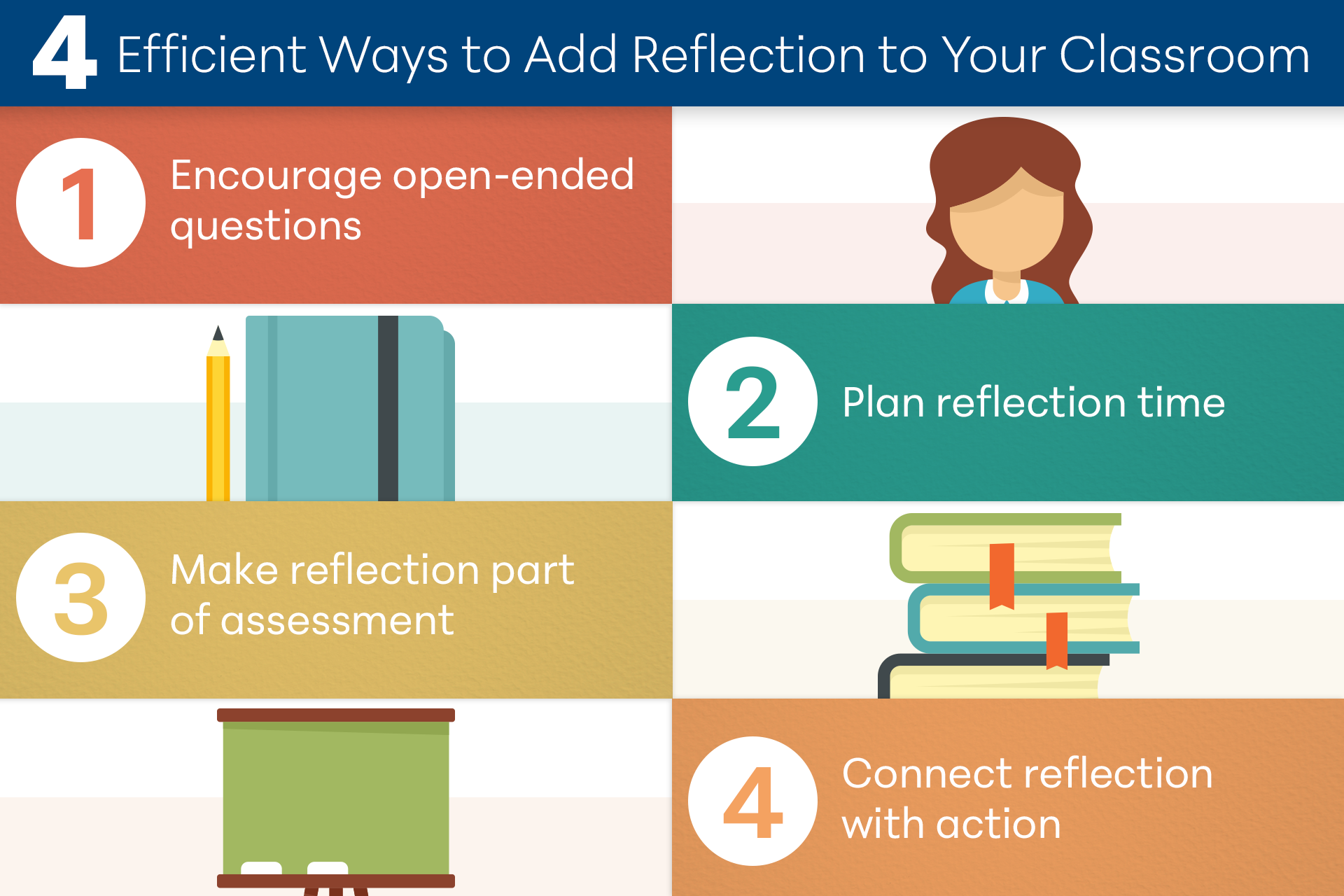Reflection is one of the strategies I implemented this year for my students. I wanted students (and myself) to reflect on all areas of life, from academic to personal. In addition, I wanted reflection to become second nature so that as my students reflected on their actions, thinking, and processes, they would be able to make changes within themselves and increase their agency which would, in turn, create a positive classroom where students felt empowered to care and take ownership of their learning.
Thankfully, I am not alone in implementing the strategy of reflection. Many of us educators strive to make the classroom a learning experience that feels memorable and truly meaningful. One key element of learning that needs to be encouraged is reflection—because there is an assumption that it will take too much time or could be emotional and messy. However, for me, reflection is worth it. There is immense value in having students pause, look back, and assess their learning experiences during class. While it may sound like more work, the results far outweigh any other student ownership and agency strategy. Incorporating time for student reflection into class can bring out the best in your students.
How genuine reflection empowers students to learn
Most educators agree that student reflection is an essential tool that can benefit both students and teachers. Reflection helps students develop their metacognitive abilities and encourages personal growth while also assisting the teacher in monitoring student progress, making for a more successful learning experience for everyone involved.
The practice of reflection hooked me when I took an social-emotional learning workshop meant to bridge the gap between the pandemic’s lost years and returning to in-person school. In this workshop, we shared how the pandemic had challenging effects on our students, one being the lack of student ownership. How could I offer my students ways to empower themselves and become owners of their own learning again? During the workshop, I heard a quote by Paulo Freire. He said, “Reflection—true reflection—leads to action.”
Propelled by Freire’s words, I realized that if my students reflected, they might be able to take steps toward ownership of their learning, and I wanted them to have agency. I wanted them to reflect and see how their reflections could lead to actions that might inspire them to reach for more strident academic goals or personal achievements. So, since the beginning of the year (way back in August ), my classroom reflects.
We reflect before an assignment and during a project before lunch. We reflect all the time. Our results are positive, and we have had students make remarkable progress and change throughout. We have come together as a classroom community and helped other classrooms begin adding reflection into their daily routine.
Reflection methods to make your classroom joyful & effective
One of the best ways I get my students to reflect on their learning experiences is to sit down and discuss the lessons as a class. Reflection isn’t just about passive observation; student reflection should involve actively discussing topics and ideas.
Doing this opens the door for fantastic conversations and insight into things not taught in the books. After a lesson, I take a few minutes out of class to allow my students to talk about what they learned and how it has impacted their thinking.
Sometimes when I want them to push their thinking, I assign them reflective writing assignments. With this, they’ll write their thoughts and opinions on the material, stating how it has changed their ideas on a concept or shifted their understanding of a particular topic. This encourages self-reflection and thought. Assigning reflective writings also allows me to evaluate how my students interpret information and ensure they grasp it as they’re meant to.
My classroom’s most powerful type of reflection is when I present students with activities that get them working in a team. This type of reflection teaches students the importance of collaboration and their ability to work together in a productive setting. For example, do an activity such as a poster project where students must work together to create an interesting and informative poster. This can allow students to reflect upon their own learning and discuss ideas, exchange knowledge, and grow from each other’s skill sets.
Teachers can start by adding reflection right away in their classroom. There is some prep time on the teacher’s part. Also, the teacher must be willing to allow students to share their reflections and be open-minded enough to accept the possibility of change. Finally, get ready to see results through positive change!
4 efficient ways to add reflection to your classroom
Encourage open-ended questions
To engage students in reflective thinking and effective learning, teachers should ask their students open-ended questions. These questions should stimulate creative thinking. For example, asking “What do you think about this subject?” allows for far more student engagement than a simple yes or no question.
Plan reflection time
Planning dedicated reflection time is crucial to ensuring students can engage in metacognitive conversations. This could involve various activities, such as discussing class ideas, writing reflective essays, journaling, and more. All these activities help students think more deeply about how past experiences in the classroom impact their present understanding of the material.
Make reflection part of assessment
Making student reflection part of the assessment process allows students to demonstrate what they have learned while also teaching their students the importance of introspection. This can be done either as a reflective task or by incorporating reflective comments in more traditional tasks.
Connecting reflection with action
Learning to reflect on experiences is an important step, but it is only part of the process. Students should be encouraged to connect and apply their reflections to present and future activities. Doing this helps to foster meaningful learning experiences and ensures that students are taught the lessons throughout their academic journey.
References
Edmonds, D. (2022). Connecting with Our Student Members through National Events and Student Chapters. The Choral Journal, 62(7), 59.


Jen Cullerton Johnson
Jen Cullerton Johnson lives, writes and teaches in Chicago. She is the author of several published books, essays, and short stories for children and adults. She has been awarded grants and fellowships for her writing and speaking.

